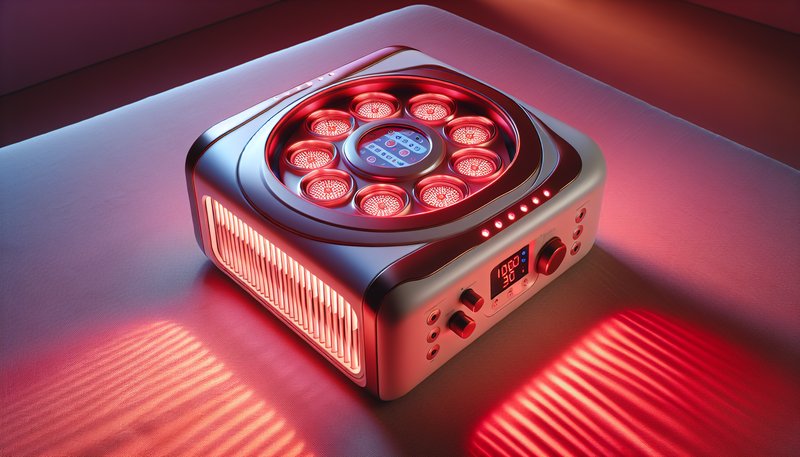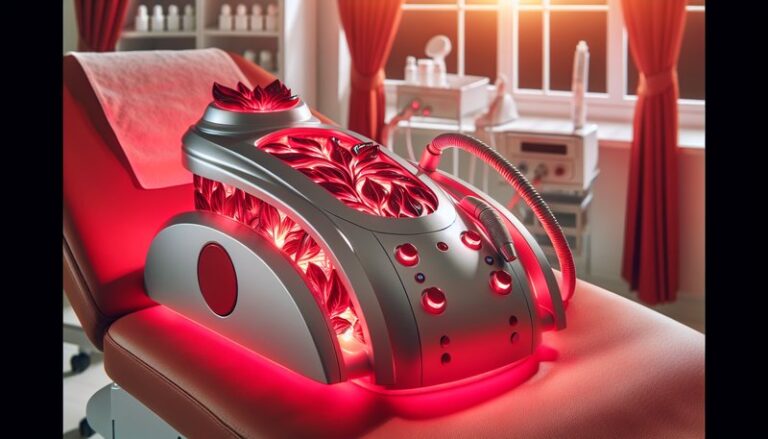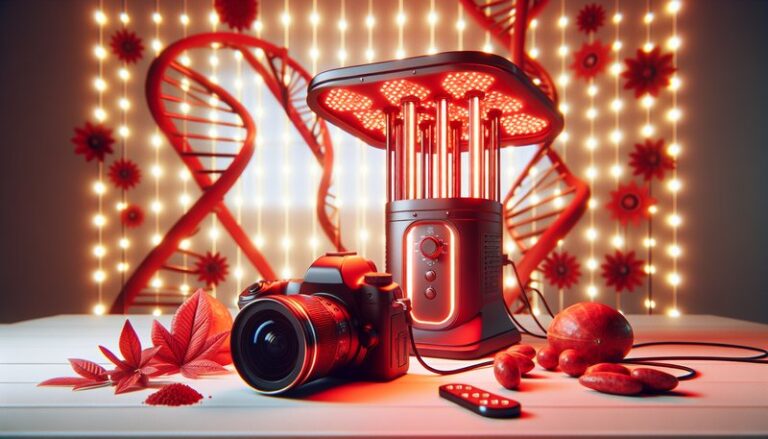Does Red Light Therapy Help Eczema?
Have you ever struggled with eczema and wished for a solution that might finally bring relief? Red light therapy is garnering attention as a potential treatment for this frustrating skin condition. In this article, we will explore what red light therapy is, its benefits, and whether it is a viable option for those suffering from eczema.
Discover the complete story Best Red Light Therapy?
Key Takeaways
- Red light therapy may reduce inflammation and promote healing, potentially alleviating eczema symptoms.
- This therapy is generally considered safe and is gaining traction as a complementary treatment for skin conditions.
- It’s essential to consider individual responses and consult healthcare professionals before starting treatment.
What is Red Light Therapy?
Red light therapy (RLT) is a non-invasive treatment that utilizes low-level wavelengths of red light to promote healing and reduce inflammation in the skin and other tissues. This technology harnesses light energy, which is absorbed by the cells, enhancing their ability to produce energy and subsequently repair themselves.
RLT has been used for various applications, including:
- Skin rejuvenation
- Pain management
- Wound healing
By increasing mitochondrial function within cells, red light therapy aims to accelerate the natural healing processes of the body, offering potential benefits for individuals with inflammatory skin conditions like eczema.
What are the Benefits of Red Light Therapy?
The benefits of red light therapy for eczema will be discussed in detail below, highlighting how it may help those who suffer from this condition.
Reduction in Inflammation
One of the major benefits of red light therapy is its ability to reduce inflammation. Eczema is characterized by inflamed and irritated skin, leading to discomfort. By using red light therapy, individuals may experience decreased redness and swelling, providing soothing relief.
Enhanced Skin Healing
Red light therapy promotes improved circulation and cellular regeneration. This can help the skin heal more rapidly from eczema flare-ups. Enhanced healing means a reduced risk of secondary infections, which can occur when the skin barrier is compromised.
Pain Relief and Comfort
Individuals with eczema often experience itching and discomfort. Red light therapy can help to alleviate these symptoms by promoting blood flow and helping to quiet overactive nerve endings. As a result, many users report less itching and improved comfort overall.
Safe and Non-Invasive Treatment
Unlike some medications that may have side effects or require long-term use, red light therapy is generally considered safe. It is non-invasive, involves no downtime, and has minimal side effects, making it a viable option for many individuals seeking relief from eczema.
Discover the facts in Can Red Light Therapy Aid Hair Growth?
Is it Possible to Use Red Light Therapy for Eczema?
Yes, using red light therapy for eczema is possible and can be integrated into your skincare routine. However, it is essential to approach this treatment with mindful consideration of personal health conditions and the nature of your eczema.
What are the Advantages of Using Red Light Therapy?
Using red light therapy for eczema comes with several advantages:
- Convenience: Treatments can often be done at home with a handheld device or through professional sessions, making it easily accessible.
- Complementary Approach: Red light therapy can work alongside other treatments, minimizing reliance on medications or topical creams.
- Quick Treatment Sessions: Sessions typically last only 15-30 minutes, fitting easily into a busy schedule.
What are the Disadvantages of Using Red Light Therapy?
Despite its benefits, there are some challenges associated with red light therapy:
- Variable Results: Not everyone responds to red light therapy in the same way; results can vary based on the individual and the severity of eczema.
- Cost of Equipment: High-quality red light therapy devices can be expensive, making it a significant investment for some users.
- Need for Consistency: Regular treatments are often necessary to see effects, which requires commitment over time.
What are the Things to Consider Before Trying Red Light Therapy?
Before embarking on your red light therapy journey, it’s essential to evaluate several factors to ensure it aligns with your health goals.
Consultation with Healthcare Providers
Before starting any treatment, consult with a dermatologist or healthcare provider familiar with your eczema and overall health. They can help determine if red light therapy may be suitable for you.
Treatment Frequency and Duration
Understanding how often and how long sessions should last is crucial. A common approach is to start with several sessions a week and adjust as necessary, but individual protocols may differ.
Monitoring Skin Response
As you undergo red light therapy, closely monitor your skin’s reaction. Keeping a journal to track improvements or any adverse effects can be beneficial in assessing the therapy’s effectiveness.
What are the Alternatives to Red Light Therapy for Eczema?
If red light therapy doesn’t seem like the right fit for you, there are alternative treatments worth considering:
Topical Corticosteroids
Often prescribed for eczema, topical corticosteroids help reduce inflammation and itchiness. While effective, their use should be carefully managed to avoid skin thinning and other side effects.
Moisturizers and Emollients
Regular application of high-quality moisturizers can help maintain skin hydration and barrier function, reducing flare-ups and symptoms of dryness associated with eczema.
Phototherapy
Like red light therapy, traditional phototherapy uses broader wavelengths, including ultraviolet light, to treat eczema. This may be effective but typically requires professional supervision due to potential risks associated with UV exposure.
Conclusion: Is it Recommended to Try Red Light Therapy for Eczema?
In conclusion, red light therapy presents a promising avenue for individuals looking for relief from eczema symptoms. While it offers various benefits, such as reduced inflammation and enhanced skin healing, the effectiveness can vary from person to person. Therefore, it is essential to consult with healthcare professionals and monitor progress carefully while considering this therapy as part of a broader treatment plan.
Frequently Asked Questions
Does red light therapy hurt?
No, most individuals report that red light therapy is painless and feels warm during treatment. There should be no discomfort.
How long does it take to see results?
Results can vary; some users may notice improvements after a few sessions, while others might take several weeks. Consistency is key to achieving the best results.
Can anyone use red light therapy?
Generally, red light therapy is safe for most individuals. However, pregnant women or those with specific conditions should consult a healthcare provider before beginning treatment.
How often should I use red light therapy for eczema?
Depending on your treatment plan, sessions are typically recommended 2-5 times per week. It’s essential to follow guidelines provided by your healthcare provider or device manufacturer.
What should I do if I don’t see improvement?
If you do not see improvement after a reasonable period, consider reaching out to a healthcare professional for advice. They may adjust treatment protocols or suggest alternative therapies.






